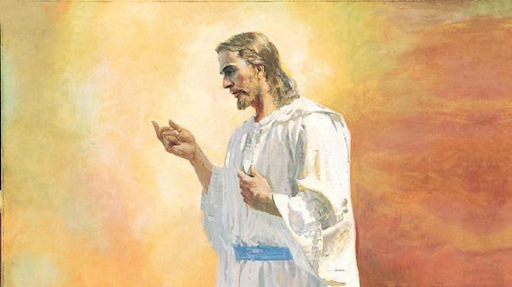
Those most befuddled by the question–Are Mormons Christian?— are often actual members of the Church of Jesus Christ of Latter-day Saints. It’s particularly confusing for those with a limited exposure to other Christian denominations. Most Mormons would describe themselves as living in a daily reality of “...we talk of Christ, we rejoice in Christ, we preach of Christ, we prophesy of Christ, and we write according to our prophecies, that our children may know to what source they may look for a remission of their sins” (2 Nephi 25:26). So it boggles the mind of some members when “fellow Christians” slap them with the label of being non-Christian.
For Latter-day Saints, the affirmation that Christ is the head of the Church is as solid as the ground beneath their feet. He is the Eternal Shepherd. Nevertheless, the question “how are Mormons different than Christians of other denominations” should not just be brushed away. Instead, it ought to be addressed in a spirit of love, patience, and respect.
Do Mormons worship Joseph Smith over Jesus Christ?
It’s fair to say that members of the Mormon faith revere Joseph Smith, but they do not worship Him. They wholly accept the tenet of the first Article of Faith, penned by Joseph Smith himself, which reads, “We believe in God, the Eternal Father, and in His Son, Jesus Christ, and in the Holy Ghost.” Furthermore, they accept the third Article of Faith, which reads, “We believe that through the Atonement of Christ, all mankind may be saved, by obedience to the laws and ordinances of the Gospel.”
Joseph Smith is considered a prophet by Latter-day Saints in exactly the same way that one thinks of Moses or Jeremiah. Joseph Smith faced tremendous adversity to restore to the earth the true doctrines he believed were established by Jesus in the meridian of time. Latter-day Saints are convinced the true tenets of Christianity were altered, lost, or abandoned soon after the age of the Apostles or around the end of the first century A.D. This loss of what Latter-day Saints might summarize as “Priesthood authority” came about as a result of corruption and apostasy–a human tendency that they feel is not unique to the first century AD. They contend that the same fate befell other periods of religious restoration in other ages and dispensations.
Joseph Smith’s intent, under the direct guidance of Jesus Christ, was to initiate what Mormons characterize as the final restoration before the Savior’s prophesied Second Coming. Joseph Smith repeatedly affirmed that Jesus Christ was at the core of his movement. He also wrote, “The fundamental principles of our religion is the testimony of the apostles and prophets concerning Jesus Christ, ‘that he died, was buried, and rose again the third day, and ascended up into heaven;’ and all other things are only appendages to these, which pertain to our religion.” This declaration is echoed by modern-day members of the Quorum of the Twelve Apostles, who stand united in proclaiming, “Jesus is the Living Christ, the immortal Son of God. … His way is the path that leads to happiness in this life and eternal life in the world to come.”
What Defines a Christian?
Still, the air is thick with debate as the sincere adherents of other Christian denominations insist that Latter-day Saints should not be accepted into the Christian fold. They often point to the Saints’ dismissal of post-New Testament creeds. But how much do modern Christians really know about such creeds? History confirms that the first creed was written in 325 A.D. under the watchful eye of the non-Christian Roman Emperor Constantine (though finally baptized shortly before his death). Constantine’s motives for organizing this gathering that came to be known as the First Council of Nicea were clearly political–to unify what he observed to be a fractious and bitterly-divided Christian community on even its most basic doctrines. After 325 A.D., and over the course of several more centuries, various councils reconvened in various locations wherein the language of the First Creed was reworked and replaced by “updated” creeds intended to further clarify what had not been clarified in the original clarification.
Joseph Smith’s mission was to restore a Christianity that breathed the same air as the early apostles, before its most fundamental doctrines were clouded by the philosophies of men. Latter-day Saints believed that the amalgamation of Christian theology with Greek philosophy was a deviation from the truth, particularly as it sought to define the nature of God. The restoration initiated by Joseph Smith adheres to the concept that Priesthood authority is the prime component of a true Church. Mormons believe this same authority is carried by those who succeeded Joseph Smith as prophet and President of the LDS Church.
True Christianity Had To Be Restored
People who contend that Latter-day Saints ought to be set apart from other Christians sometimes demonstrate that the lineage and history of the LDS Church cannot be traced through traditional Christian roots. Indeed, Latter-day Saints view their church not as a departure, but as a homecoming to the original organization established by Jesus Christ, a restoration that could only be achieved after restoring divine Priesthood keys. Church doctrine proclaims that such keys were restored to the earth by none other than such post-mortal figures as John the Baptist and the three apostles, Peter, James and John. Latter-day Saints believe these men personally visited Joseph Smith and Oliver Cowdery in 1829 and restored this authority through the ordinance known as the “laying on of hands.” The idea of Christ’s true Church operating on a premise of restored Priesthood authority has obviously struck a powerful chord with countless investigators and millions of converts for the past two centuries. Most converts, who formerly identified with other Christian denominations, see themselves not as defectors from their Christian roots, but as pioneers uniting themselves to a more complete gospel.
An Open Revelatory Canon
One criticism leveled against the Church in the ongoing debate between Christianity vs Mormonism is that Latter-day Saints insist upon an open scriptural canon. This concept directly challenges the commonly-held tenet that Christianity must, by definition, accept a closed Biblical canon ending with John’s Revelation–a text that most scholars believe was composed before other New Testament texts, including the Gospel of John.
Latter-day Saints insist that revelation did not cease with the Bible’s final page, but that revelation continues to flow as a testament to God’s ongoing communication with His children. Examples of God’s pen canon, includes not only the Book of Mormon, but also a collection of modern revelations compiled in The Doctrine and Covenants. These volumes, alongside other canonical works, serve to enrich Latter-day Saints’ understanding of God’s eternal will while also reaffirming that Jesus Christ is, indeed, the Savior of the world.
Conclusion: Are Mormons Christians?
As dusk falls on the conversation, the distinctiveness of The Church of Jesus Christ of Latter-day Saints in the Christian tapestry ought to be clear to all who open-mindedly examine its landscape. Their unique scriptural canon and the conviction that they are part of a restored gospel tradition contributes to the broader Christian dialogue, emphasizing unity in love through the teachings of Christ the King. While some persist in a desire to perpetuate semantic arguments that emphasize how are Mormons different than Christians, perhaps a better course is to celebrate how much all Christians denominations have in common. In today’s secular and philosophical landscape, where darkness and selfishness seem to increasingly widen existing divisions between nations, tribes, and individuals, the message of the Latter-day Saints stands as a testament to a diverse application of what it means to be Christian and unite with Christ’s oft-quoted ethic of loving God with all of our hearts and mind and loving others as we love ourselves. It’s these sentiments that invite believers to flock to the Christian banner. The vast spiritual landscape is not poorer, but richer for the LDS presence, a reminder that amidst the vast fields of faith, there is room for every seeker of Christ.

By Todd Noall, Source Expert
Todd Noall is an author and religious scholar at Mormonism Explained with a focus on the history and theology of religion.

Fact Checked by Mr. Kevin Prince, Source Expert
Kevin Prince is a religious scholar and host of the Gospel Learning Youtube channel. His channel has garnered over 41,000 subscribers and accumulated over 4.5 million views. Mr. Prince also created the Gospel Learning App, a reliable platform where individuals seeking truth can access trustworthy answers to religious questions from top educators worldwide.
About Mormonism Explained
Mormonism Explained is a resource that was designed to provide objective and factual information about Mormonism, its history, doctrines, and policies. Our team of researchers consults experts and primary sources to present factual information on a variety of topics relevant to the Mormon Church.
Tags
